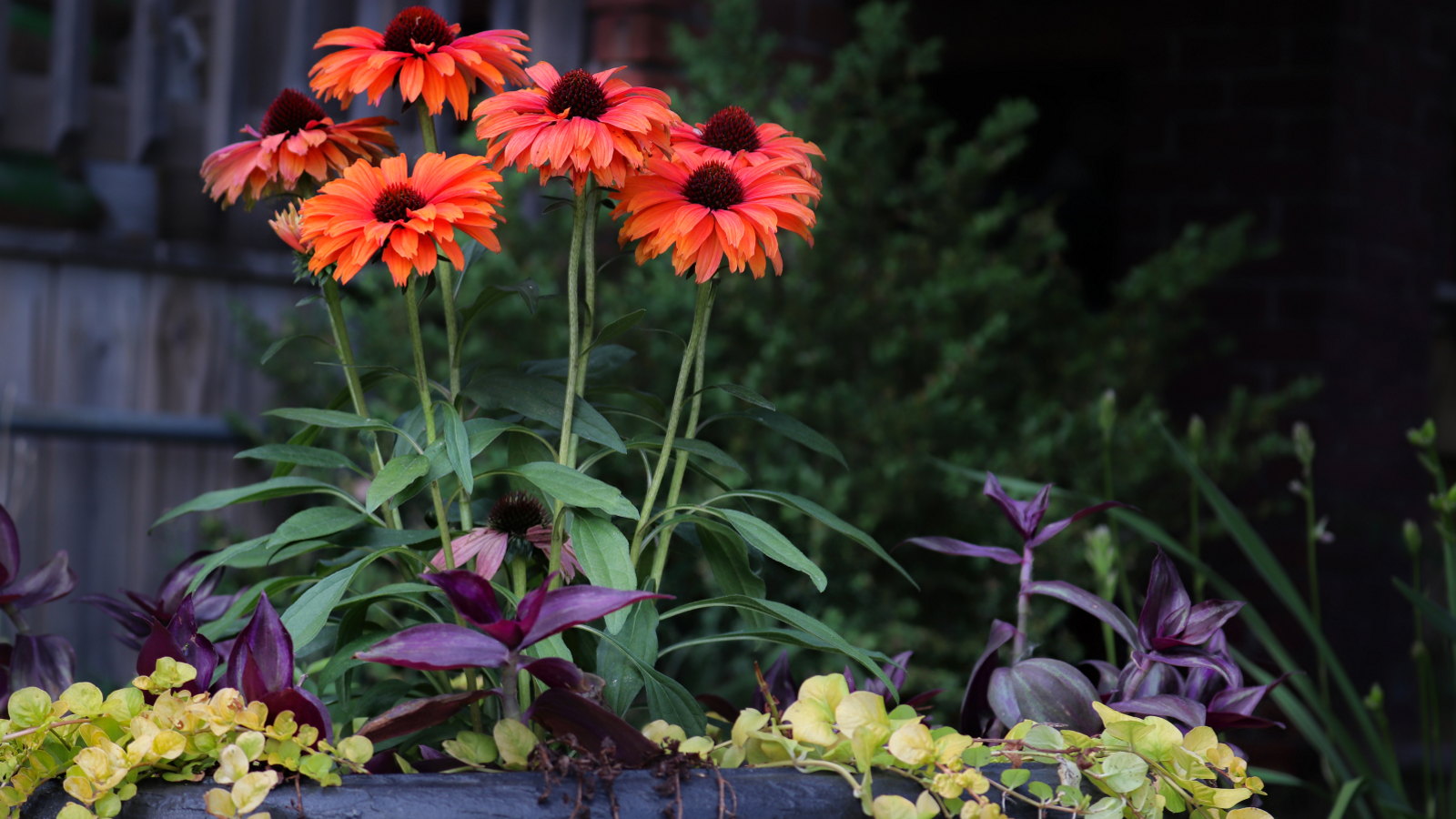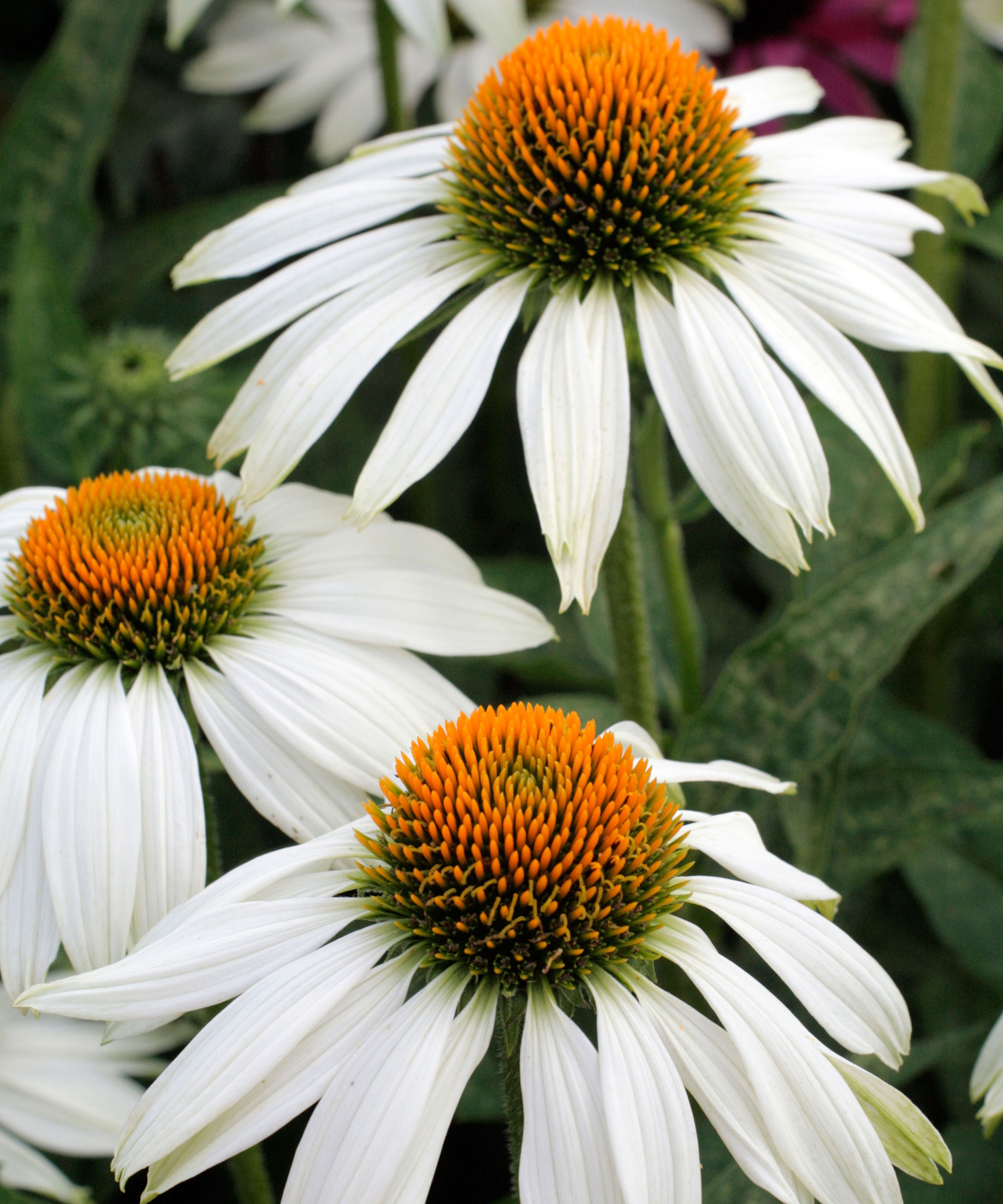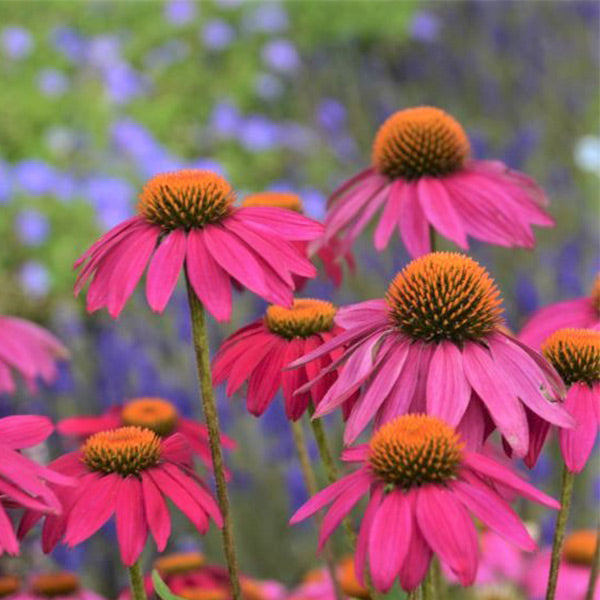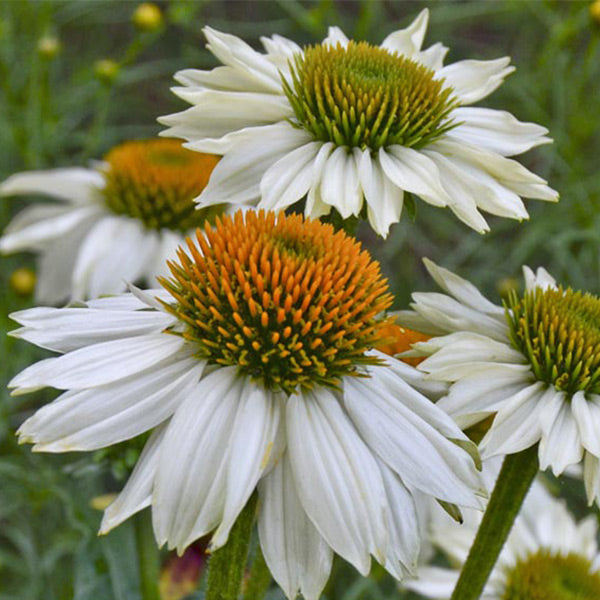How to grow coneflowers in pots – 5 steps to brilliant blooms in urban gardens, plus the best varieties to pick
We reveal everything you need to get right for thriving coneflowers in containers


Coneflowers are stunning and popular perennial plants that always impress with their bright daisy-like flowers, featuring a large central cone surrounded by dazzling petals. While more familiar in flower beds and borders, or as part of prairie planting schemes, you can grow coneflowers in pots in smaller spaces.
They can bring bold color and attract wildlife to any urban garden, deck or patio, but there are some important factors to get correct. It includes the perfect container, the best soil, and placing the pot in an ideal location.
If you want to learn more about how to grow coneflowers in pots, this guide highlights the five key steps to get it right. It also includes the best varieties of coneflowers to grow in pots, as picking wisely can make things a lot easier.

Can you grow coneflowers in pots?
'Coneflowers do great in containers, especially if you’re short on garden space in the city,' says Samuel Davis, an experienced horticulturist and CEO of London Gardeners. 'They grow tall, withstand drought, and attract pollinators, making them a solid pick for patios or balconies.'
If you want to grow coneflowers in pots, follow these five expert-recommended steps for healthy plants and fantastic flowering displays:
5 key factors to get right for thriving coneflowers in pots
1. Pick a large container

If you want to grow coneflowers in pots successfully, it is important to get the size of the container right. The exact size you need will depend on the coneflower variety, but the general rule of thumb is that larger is better.
'Coneflowers can thrive in larger pots, so if you do want your coneflowers to succeed in a container, make sure it’s a large one,' says Lydia Beaumont from Gardeners' Yards. 'A two-gallon container is the minimum size we recommend for coneflowers to thrive.'
Design expertise in your inbox – from inspiring decorating ideas and beautiful celebrity homes to practical gardening advice and shopping round-ups.
Different varieties of coneflowers develop various types of roots. Some produce long taproots, whereas others have more fibrous root systems.
Those coneflowers with fibrous roots, which include the most popular coneflower in the form of E. purpurea, require a container 12 inches deep. While varieties known for their taproots, including E. pallida, E. angustifolia, or E. tennesseensis, need pots 24 inches deep.
A container can be made of any material, but it does need holes in the bottom for drainage to prevent the coneflowers from sitting in soggy soil.

Lydia Beaumont is a gardening expert for Gardeners Yards - a trusted online resource for gardeners to grow, inspire and discover. Whether crafting stylish table settings or transforming a garden into a personal oasis, Lydia loves making every space stunning and comfortable.
2. Choose a suitable variety
There are nine species of coneflowers native to North America, and a wide range of cultivars in different sizes and colors.
All types of coneflower can be grown in pots, however, shorter varieties are best suited to growing in containers. These reach more manageable sizes and are at less risk of toppling in containers during strong winds.
If you aspire to grow coneflowers in pots, compact-growing variants of E. purpurea are going to be the easiest. They often stay under 24 inches tall, are highly productive, and have a smaller fibrous root network that needs smaller containers.
Some fantastic compact varieties of E. purpurea include ‘PowWow Wild Berry’, ‘Prairie Spendor’, and ‘Pixie Meadowbrite’.
3. Grow plants in well-draining soil

Coneflowers are low-maintenance, drought-tolerant plants that like well-draining soil and dislike sitting in damp conditions for too long.
An all-purpose potting mix provides the best soil for container gardening. You can incorporate some rice hulls or perlite to help retain moisture and also enhance drainage.
Avoid reusing potting soil, as it may lack nutrients or harbour pests and diseases. Also, never use garden soil in pots as it sits too heavy when wet and risks coneflowers rotting in sodden soil.
Mulching the soil surface with a thin layer of compost or leaf mold can help retain moisture in the soil and add some nutrients as it breaks down.
4. Place the pot somewhere sunny
Coneflowers are native plants in North America and popular in wildflower and wildlife gardens to attract butterflies, hummingbirds, and bees.
For the best flowering display, coneflowers prefer a warm and bright spot. Samuel Davis, CEO of London Gardeners, advises: 'Coneflowers love the sun, so place them where they can get at least six hours of direct light every day.'
Taller varieties will benefit from some protection against strong winds, to prevent the stems from getting snapped and any display from being ruined.
When you grow coneflowers in pots, they may need protection in cold winters. Coneflowers are hardy in US hardiness zones 3-9, though plants in pots in colder regions will need protection against frost getting to the roots.
To winterize coneflowers in pots, move containers to a protected area, bury the container, mulch around the pot, or cover them, such as with these plant pot covers from Amazon, to protect the roots.

Samuel Davis, a horticulturist and the CEO of London Gardeners, brings a green thumb and strategic vision to the helm. Under his leadership, London Gardeners has blossomed into the go-to destination for premier gardening services in the city, fostering beautiful landscapes while nurturing a commitment to environmental stewardship.
5. Keep up with regular maintenance

- Watering - Coneflowers may be drought-tolerant flowering perennials, but they will benefit from regular watering. Especially as plants in containers dry out quicker than when in the ground. Maintain a close eye on when to water plants, and increase the frequency during hot periods. Check the moisture levels an inch or two under the surface with your fingers to determine when to water plants in containers. If the soil feels dry, water deeply till it starts to run out of the drainage holes. Take care not to overwater plants, especially during the colder months when there is an increased risk of root rot if coneflower sits in soggy soil for long periods.
- Feeding - Plants in container gardens often need much more regular feeding than plants in the ground. However, coneflowers do not need lots of feeding, and they can suffer from over-fertilizing. Samuel Davis advises using a balanced slow-release fertilizer in the spring, at the recommended rates, and he warns: 'Don’t overfeed them, or you’ll get tall, spindly growth.' Mulching the surface with compost once a year will also provide nutrients to the plants.
- Deadheading - Deadheading spent blooms through the summer encourages more flowering and the longest season of blooms. It can keep containers neat throughout the season. However, consider leaving some old flower heads later in the season as they provide a valuable food source for birds and habitat for insects during the winter months. You can cut back coneflowers to the base in late winter or early spring.
FAQs
Will coneflowers come back in pots?
Coneflowers are perennials that will die back in early winter and start growing again in spring. Important steps to guarantee their return each year is to give pots protection in colder climates, such as by moving or insulating containers, and watering sparingly to avoid the roots rotting in sodden, cold soil over winter.
Should you divide coneflowers in pots?
Coneflowers naturally spread when planted in flower beds, and will benefit from regular splitting when grown in containers to prevent overcrowding and keep them productive. Divide plants in spring every 3-5 years to keep the clump healthy and guarantee the best displays year after year.
If you want a budget-friendly way to grow more coneflowers, then you can collect seeds in the fall. To harvest coneflower seeds, leave some stems on the plant until the petals have died and fallen off.
Snip off the dried seedhead with a bit of stem attached and tie a paper bag around it. Hang the seedhead upside down and the seeds should fall out naturally.

Drew has worked as a writer since 2008 and was also a professional gardener for many years. As a trained horticulturist, he worked in prestigious historic gardens, including Hanbury Hall and the world-famous Hidcote Manor Garden. He also spent time as a specialist kitchen gardener at Soho Farmhouse and Netherby Hall, where he grew vegetables, fruit, herbs, and cut flowers for restaurants. Drew has written for numerous print and online publications and is an allotment holder and garden blogger. He is shortlisted for the Digital Gardening Writer of the Year at the 2025 Garden Media Guild Awards.


